The Complete Guide to Japanese Knife Types

Japanese knife types are like an assortment of painter’s brushes; there are shapes and styles that serve perfectly for every culinary need.
Having high-quality, high-precision Japanese knives is a must for a budding chef. This is especially true in the world of Japanese cuisine, where the modern chef’s knife utilizes techniques that originated with the creation of katanas used by the samurai in warfare.
The array of Japanese knife types is broad and specific, with special blades that handle everything from peeling the tissue-thin skin from tomatoes to heavy cleavers for splitting beef cuts and whole chickens. Considering the myriad Japanese knife styles available — from santoku and nakiri knives to utility knives — it can be overwhelming to know how to choose the right knife for the right job.
Which Japanese knife types are most helpful for your general cooking needs? And which should you have on hand for those unique gourmet functions you may only encounter every so often? Below, we’ve gathered a list of the most useful Japanese knife types to have in your kitchen, with an explanation for how to use each one.
Jump to Section
- Santoku (Multi-Purpose Knife)
- Gyuto (Chef's Knife)
- Nakiri (Vegetable Knife)
- Petty (Utility Knife)
- Deba (Butcher's Knife)
- Yanagi (Sushi Knife)
- Kiritsuke (Multi-Purpose Knife)
- Honesuki (Boning Knife)
- Sujihiki (Carving Knife)
- Usuba (Vegetable Knife)
- Takobiki (Slicing Knife)
- Pankiri (Serrated Knife)
- Mukimono (Paring and Garnish Knife)
- Udon Kiri (Udon Noodle Knife)
- Caring for Japanese Knife Types


1. Santoku (Multi-Purpose Knife)
What is a santoku knife used for? This extremely popular Japanese knife type has a gently curved blade with a rounded top and pointed tip, a shape commonly referred to as a sheep’s foot. Its name translates to “three uses,” which refers to its intended ingredients (meat, fish and vegetables) as well as its cutting capabilities (slicing, dicing and chopping). It makes a perfect all-around kitchen knife, great to have on hand for general cutting needs.
Our Favorite Chef-Approved Santoku
A top pick for the best santoku knife on the market is the ultra-stylish Miyabi Birchwood 7" Rocking Santoku Knife. According to a review by Chef Lisa, this knife is the perfect marriage of a santoku and a chef's knife, offering a razor-sharp ice-hardened blade that's both ultra thin and ultra sturdy. The solid birchwood handle makes it easy to control, even for smaller hands, with a bolster that comfortably protects the fingers. It's an all-star performer for just about any chopping need.
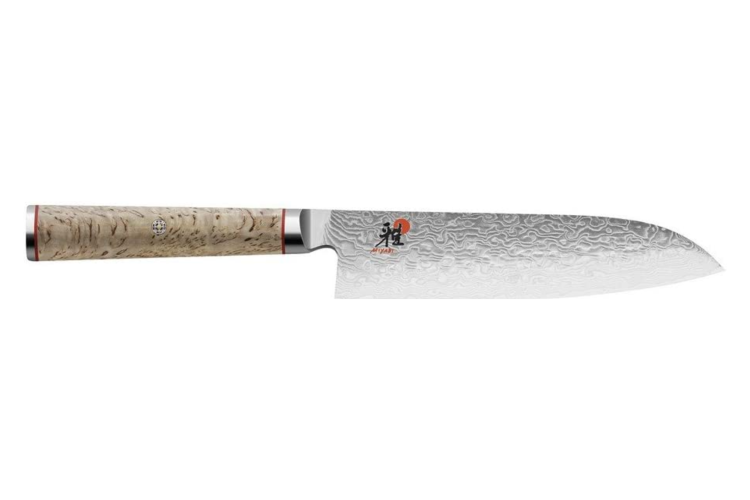
2. Gyuto (Chef's Knife)
Another Japanese knife type that makes a perfect all-around cutter, slicer and chopper, a gyuto has a thin blade but retains the length and roundness that makes cutting meat, fish and vegetables an easy task. The shape and thickness of a gyuto’s blade is achieved by methods used in creating samurai swords, which slice the fibers of the food rather than crushing them. This makes it a highly useful type of Japanese knife for preserving the freshness of meat and locking in its flavor.
Our Favorite Chef-Approved Gyutos
Favorite gyuto knives include the following:
- Kikuichi Elite Warikomi Damascus Tsuchime 8" Gyuto Knife
- Miyabi Artisan 8" Chef Knife
- Miyabi Evolution 8" Chef's Knife
According to their reviews, Chef Jordan W. loves the Miyabi Evolution for its comfortable grip and ability to keep a sharp edge, while Chef Andy loves the Miyabi Artisan for its high-quality design and sharpness.
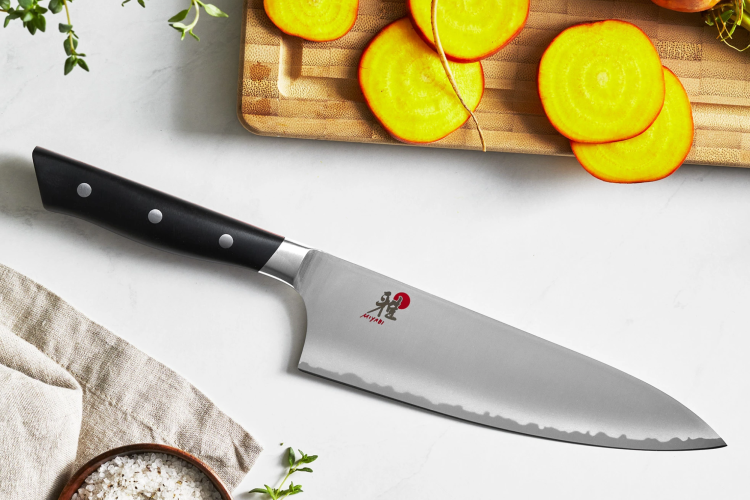
3. Nakiri (Vegetable Knife)
A straight edge and broad, flat profile make this Japanese knife style similar to that of a cleaver. This type of Japanese knife is a perfect choice for chopping, slicing and dicing vegetables. Its thin body is light and flexible and makes for great push-cutting as well as sliding food from the chopping board into a bowl or pan.
Our Favorite Chef-Approved Nakiri
Two of the best nakiri knives are the elegant Kikuichi Ginsan Sanmai 6.5" Nakiri Knife, handcrafted in Japan and hand-engraved with the Kikuichi chrysanthemum logo, and the Miyabi Evolution 6.5" Nakiri Knife, hand-crafted in Seki, Japan. Chef Chris loves the Miyabi Evolution nakiri for its comfortable rounded handle and flawless mesh of German-style durability with Japanese craftmanship. It also features an ice-hardened steel blade that is extremely durable and resistant to corrosion.
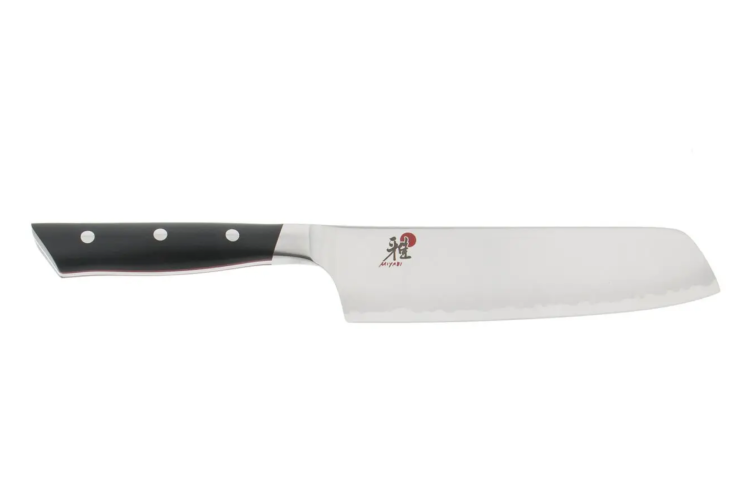
4. Petty (Utility Knife)
This small, handy Japanese knife type is the slightly larger equivalent of a traditional Western paring knife found in a standard knife block. It’s agile enough to slice fruit, chop herbs and tackle general peeling and paring tasks. It also makes a great starter for anyone unaccustomed to the shape and sharpness of a larger type of Japanese knife such as a gyuto.
Our Favorite Chef-Approved Petty Knives
There are many fantastic petty knives to pick from, but the Kikuichi Ginsan Sanmai Petty Knife and Kikuichi Molybdenum Paring Knife are stand-out favorites. In her review of the Kikuichi Molybdenum Paring Knife, Chef Sharon calls out the comfortable grip and easy maneuverability of the blade. For the Kikuichi Ginsan Sanmai Petty Knife, Chef Jordan W. highlights the knife as a perfect medium between a chef's knife and a paring knife, perfect for fileting fish or breaking down chicken, pork or beef.
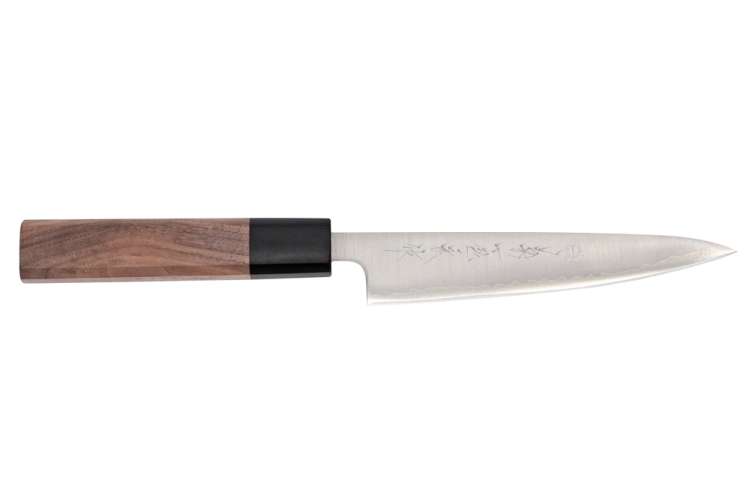
5. Deba (Butcher's Knife)
With its classic butcher-knife blade and familiar handle profile, the deba is the most easily recognized of the Japanese knife styles. The blade will easily fillet a whole fish without damaging the flesh.
What about the uses of a butcher knife vs. a cleaver? Smaller bones should be no problem with a deba, but cutting through larger bones should be avoided — this Japanese knife type isn’t intended to be used as a cleaver and won’t stand up to rough use on a butcher’s block.
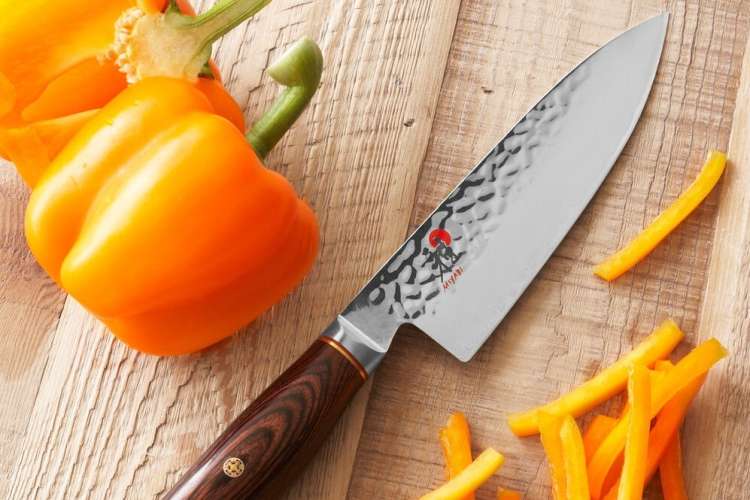
6. Yanagi (Sushi Knife)
Although you might not have known the name, you’ve seen a yanagi if you’ve ever watched a professional sushi chef at work. This Japanese knife type is a classic tool for cutting sashimi and nigiri.
With a long, thin blade of non-stick carbon steel derived from traditional Japanese sword-making techniques, a yanagi (Japanese for “willow blade”) is a type of Japanese knife weighted to slice evenly through a block of fish using the pull-cut method, as opposed to similar knives of Western design that utilize push-cutting.
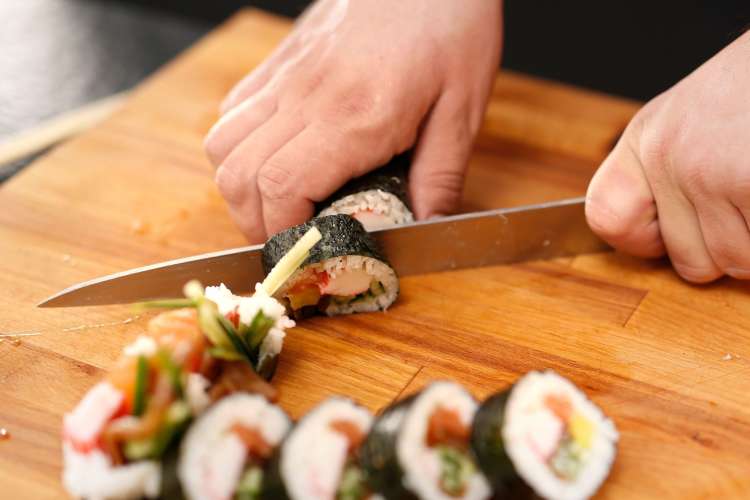
7. Kiritsuke (Multi-Purpose Knife)
This Japanese knife style is considered a status symbol among chefs in the restaurant industry in Japan, generally used only by a head chef due to the precise skill required to use it.
Its design is a hybrid of a gyutou and a yanagi, with shared functions similar to both types of Japanese knives. The edge comes with a single- or double-bevel, which broadens the functionality to include tap chopping. Possibly a better choice for an advanced home chef, though it’s certainly a contender for your personal kitchen, where you’re the one in charge!
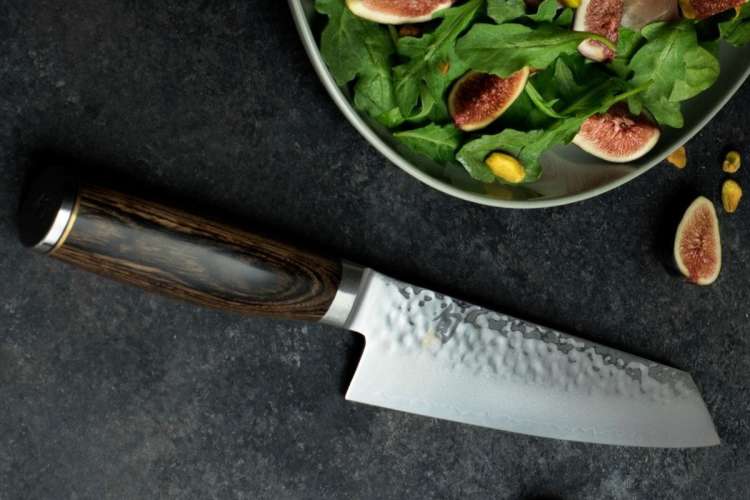
8. Honesuki (Boning Knife)
With its short triangular blade equal to the length of its handle, the honesuki is the Japanese knife type favored for boning and skinning small animals. It was originally used with rabbits and poultry but can also be highly functional on fish and larger meat cuts.
While this type of Japanese knife shouldn’t be forced through bones while cutting, it’s perfect for breaking through any cartilage and tendons you might encounter.
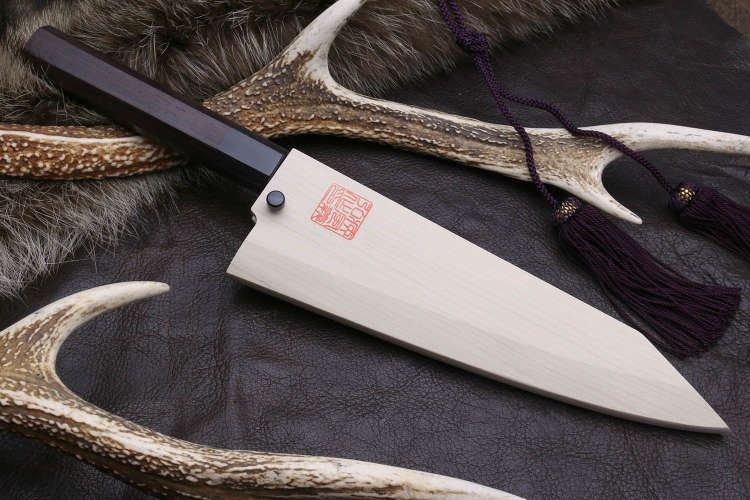
9. Sujihiki (Carving Knife)
A long narrow blade with a double edge that slices through vegetables and meats with equal ease, the sujihiki is the Western version of a yanagi. Like the gyutou, it preserves the integrity of the food it cuts and is a great Japanese knife type for making long slices through fish skin or for separating fat from muscle in larger meat cuts.
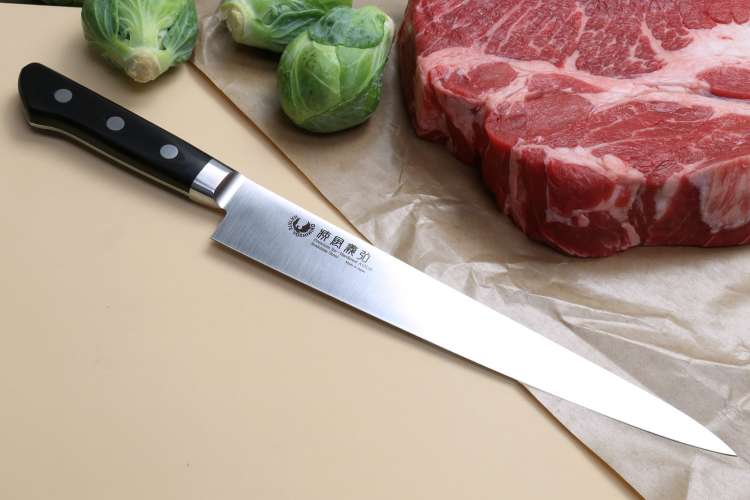
10. Usuba (Vegetable Knife)
An usuba is perfect for slicing raw fruits and vegetables without creating oxidation or browning that compromises appearance and flavor. While the tall, rectangular blade of this Japanese knife type can be used for chopping larger vegetables such as heads of lettuce, it can easily be damaged by hard pits found in the center of stone fruits.
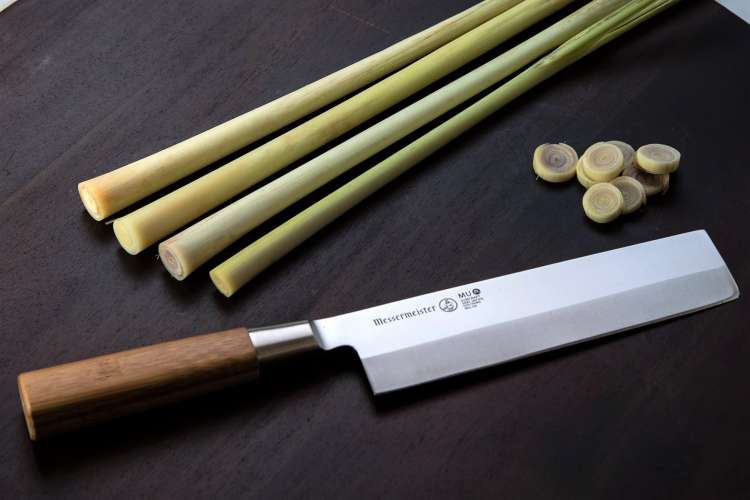
11. Takobiki (Slicing Knife)
This slicer is a favored Japanese knife type for sushi chefs who found the rounded blade of a yanagi longer than safely advised for use in close cooking quarters. Its thin profile, squared-off end and extremely sharp edge bear a striking resemblance to a barber’s straight razor, qualities that make it a great choice for slicing raw fish and vegetables.
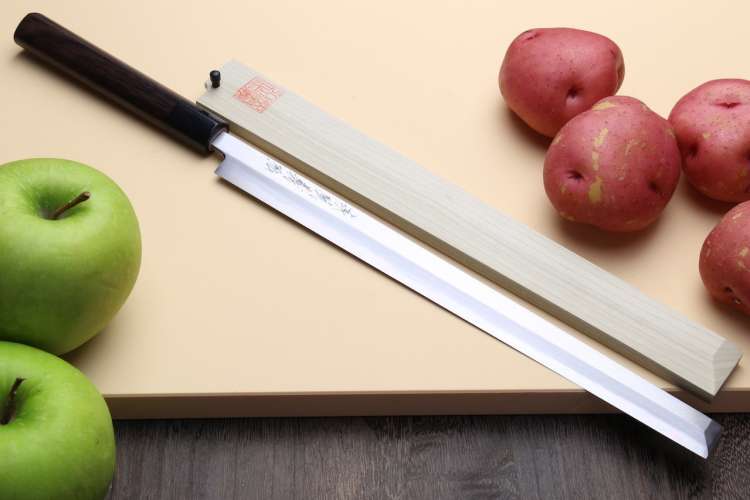
12. Pankiri (Serrated Knife)
If the serrated edge and long blade look familiar, it might be because this Japanese knife style is the Eastern cousin of a standard Western bread knife and is used for the same purpose.
Its savage sharp-toothed ridge, elongated blade and elegant shape make an easy task of sawing through crust without smashing the tender fibers within the loaf.
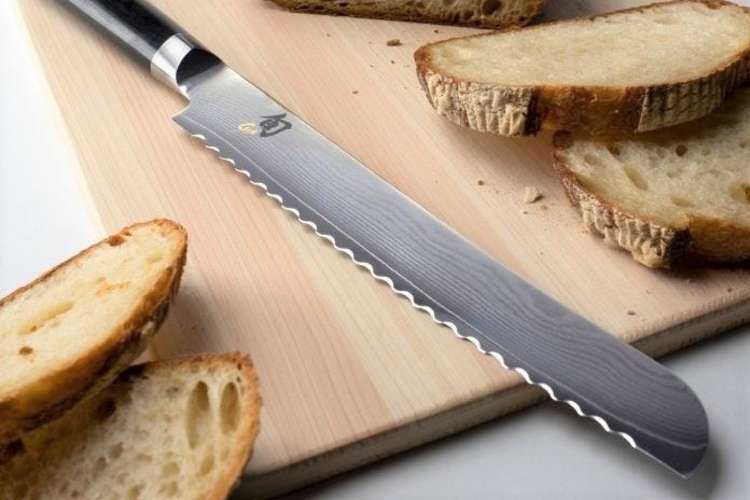
13. Mukimono (Paring and Garnish Knife)
When you picture this Japanese knife type, picture the intricate decorative fruit and vegetable carvings created with it. The blade shape is similar to an usuba, though it’s much smaller and thinner, and serves equally well for general kitchen uses such as slicing and paring softer ingredients.
It’s a must-have Japanese knife type for any aspiring chef hoping to include artful garnishes and elegant produce displays among their culinary skills.
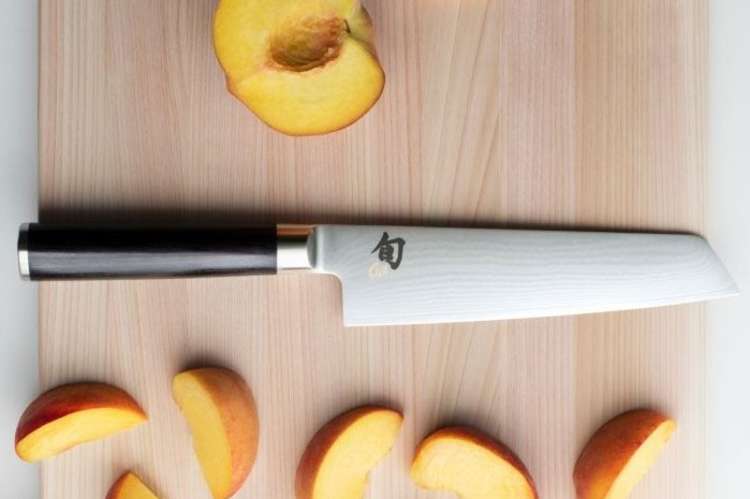
14. Udon Kiri (Udon Noodle Knife)
As the name asserts, this Japanese knife type is dedicated to the creation of udon noodles, which require a unique shape in which the blade takes up less than half of the handle length.
This is necessary for creating the distinctive noodle shape, though the kiri comes in soba and kasha variations, too, where the blade-to-handle ratio is slightly different, determined by the various noodle shapes. All three versions bear a long, straight blade with no curve, which allows for cutting straight to the board when pushing through dough while retaining a clean edge on every slice.
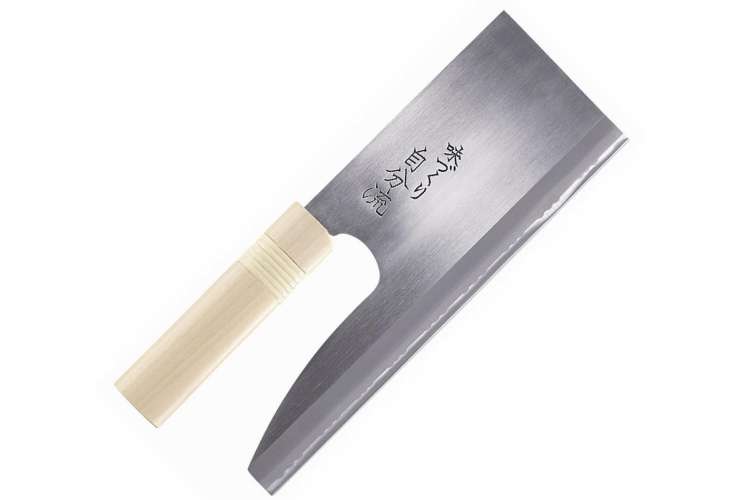
Caring for Japanese Knife Types
There are a few important things to know about the use and care of Japanese knives. While Japanese knife types are lighter and sharper than their Western counterparts, their tips can break and their blades can chip.
Be careful not to flex or twist the blade while you're cutting, which can cause cracks. You should also always use a proper wooden cutting board while you're working rather than attempt to chop on metal, stone or glass surfaces — even bamboo and plastic cutting boards should be used cautiously. And finally, Japanese knives are generally not dishwasher safe. Wash and dry them by hand before putting them away.
With the right care and maintenance, you'll be able to prolong the life and usefulness of all your Japanese knives.
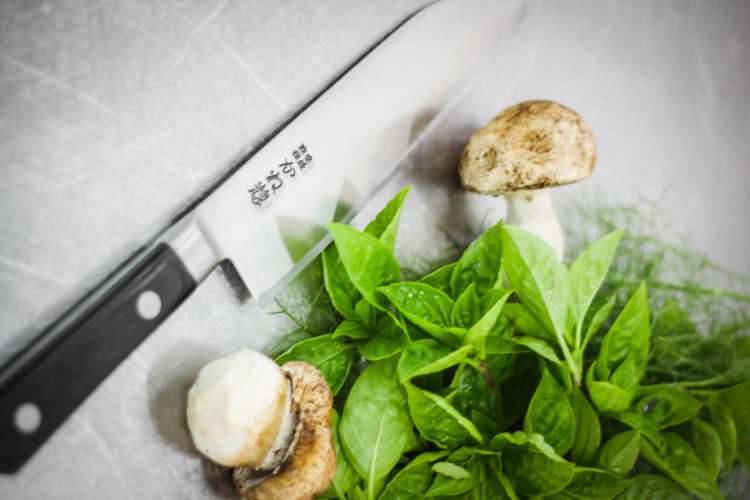
There’s an entire family of Japanese knife types with individual members whose roles are as distinctive as their shape, size and weight.
If you favor vegetarian and vegan cuisine, a multi-functional nikiri would make a great starter knife. You could easily add an usuba for slicing softer fruits or a mukimono to try your hand at whimsical garnishes.
If you’re an aspiring sushi chef, a yanagi or takobiki would be the perfect Japanese knife types to add to your cutlery collection. And if meat and poultry dishes are your specialty, a santoku or honesuki would be a perfect fit, with a sujihiki making a great follow-up when you’re ready.
For even more ways to elevate your kitchen, check out chef-recommended cutlery in the Cozymeal Shop.
